Basketry Hat Item Number: E2580-0 from the National Museum of Natural History
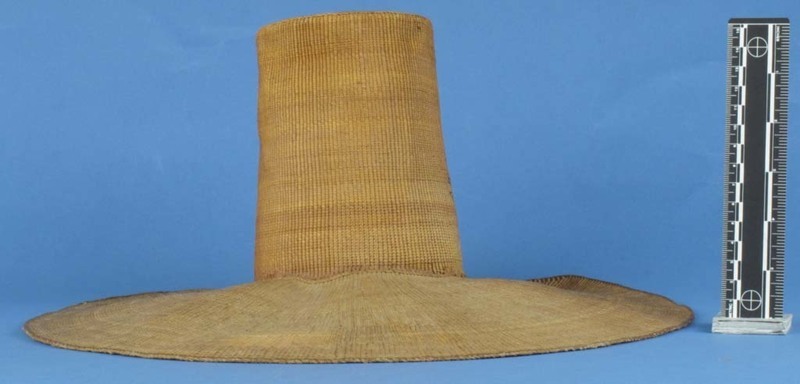
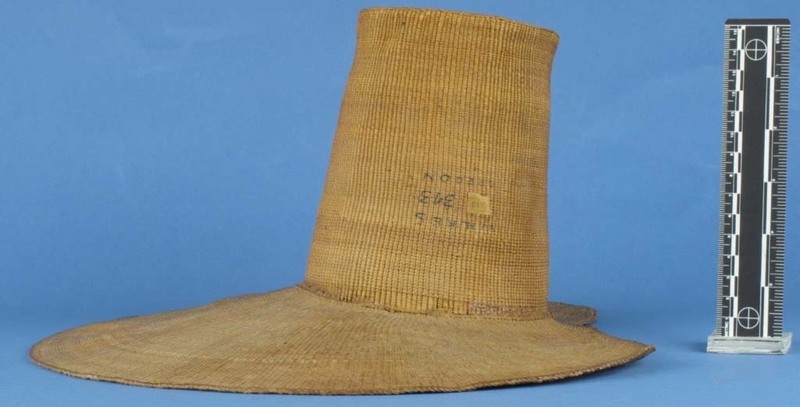
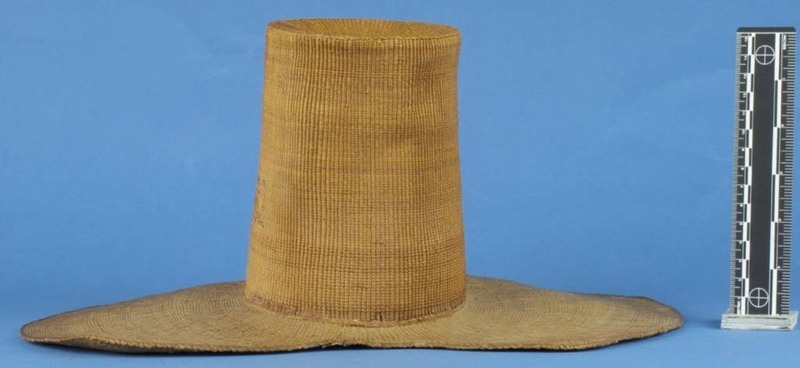
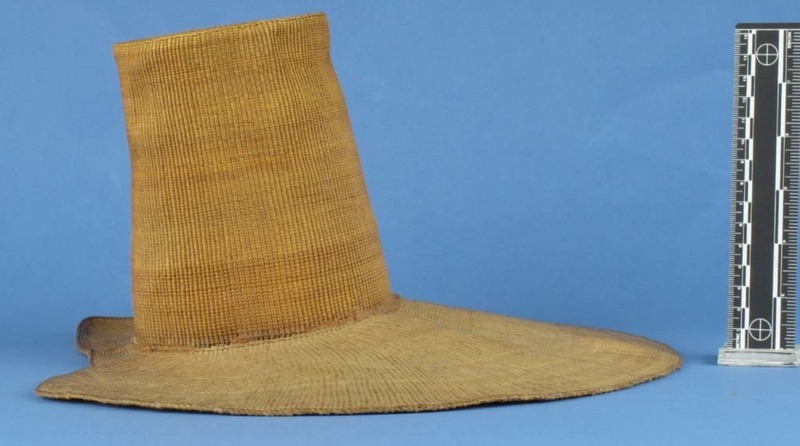
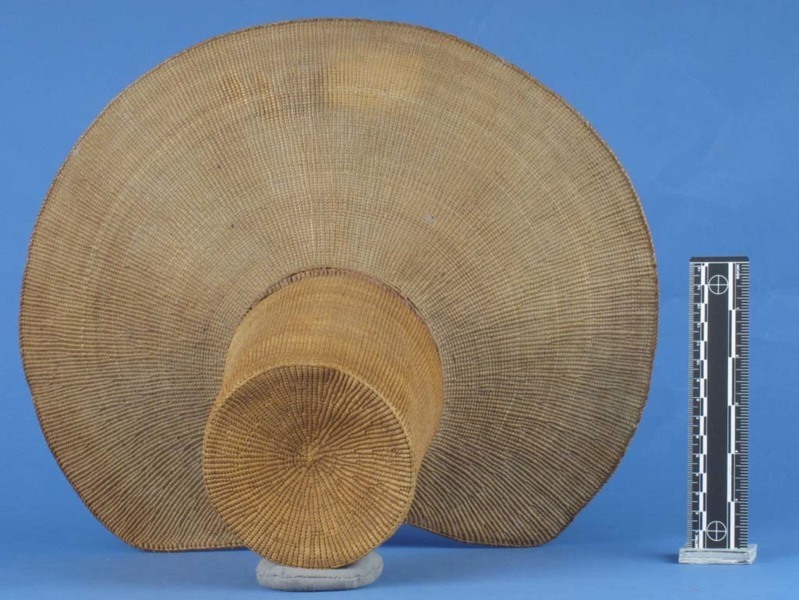
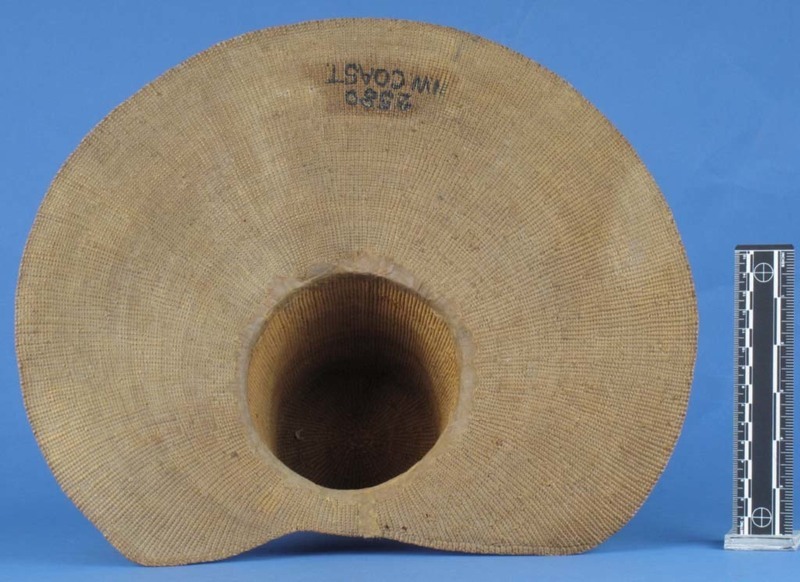
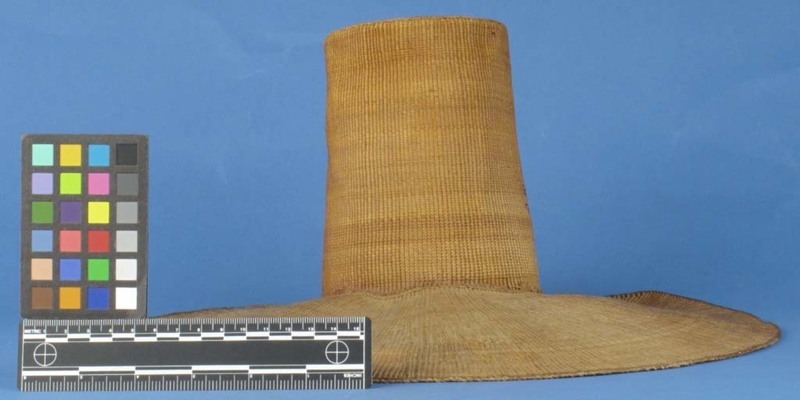
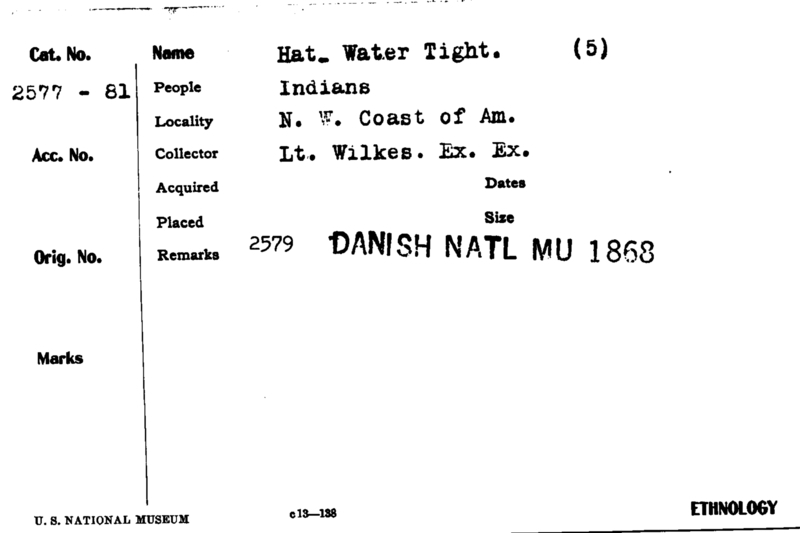
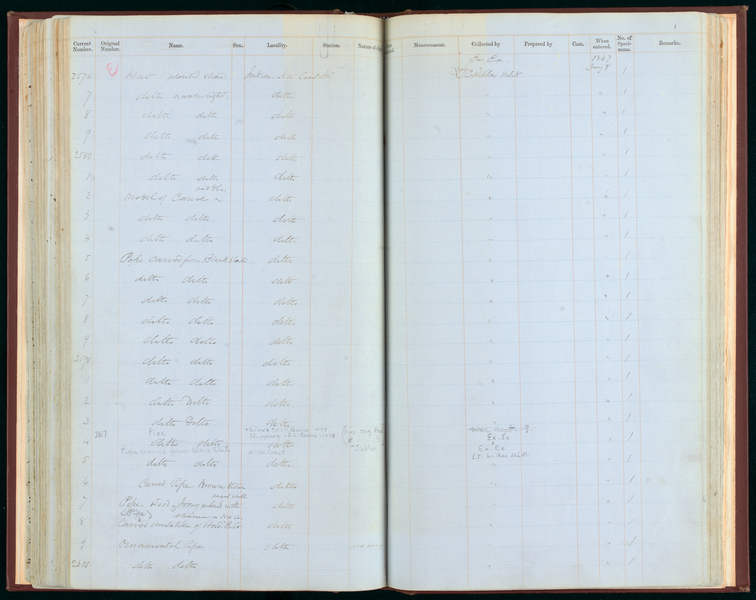
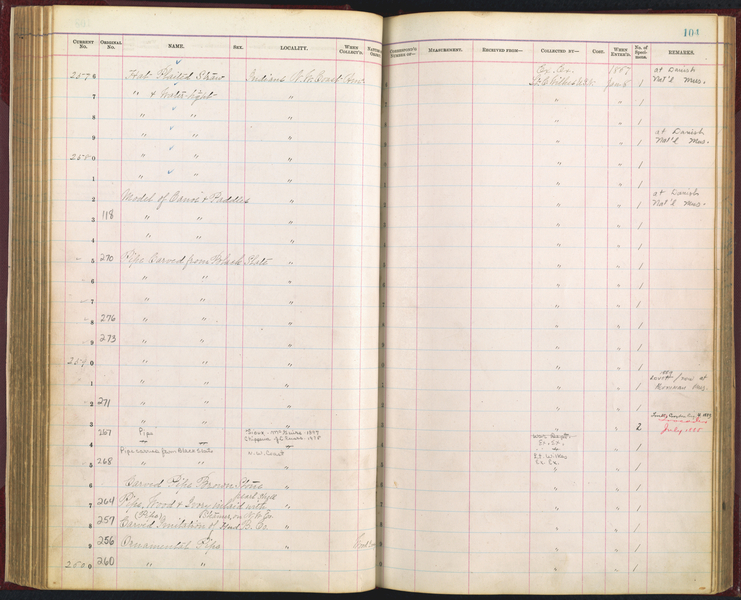
Notes
TIGHTLY WOVEN, SINGLE-PAIR WRAPPED TWINE HAT WITH A WIDE BRIM AND A HIGH CYLINDRICAL TOP, PROBABLY MADE OF SPRUCE ROOT. THE HAT IS MADE IN THE FORM OF A EUROPEAN WOMAN'S STRAW POKE BONNET OF THE EARLY 19TH CENTURY. HAS ORIGINAL PEALE TAG, WRITTEN ON HAT, "WILKES 343 OREGON". PUBLICATION: ILLUS. IN THE "NARRATIVE OF THE UNITED STATES EXPLORING EXPEDITION," CHARLES WILKES, 1845, VOL. V, P. 158. EXHIBITED MAGNIFICENT VOYAGERS, NATIONAL MUSEUM OF NATURAL HISTORY, 1985-86. EXHIBITED SITES "MAGNIFICENT VOYAGERS," 1987-89.Provenience note, in 1841 Oregon Territory encompassed the land from Russian Alaska to Spanish California and from the Pacific to the Continental Divide. The U.S. Exploring Expedition did not go to Canada, but did reach Oregon Territory in 1841, and carried out a hydrographic survey of the Columbia River from its mouth to the Cascades, as well as doing some surveying inland.They had dealings with Hudson's Bay Company staff during that time, and it is probable that the HBC is the source of a number of the Northwest Coast artifacts collected by the expedition.Identified as of probable Haida manufacture, based on the start, by Haida artists (basketmaker and textile weaver) Delores Churchill and Evelyn Vanderhoop, 2015.
Item History
- Made in Oregon, USA
- Collected in Oregon, USA between 1838 and 1842
- Received from United States Exploring Expedition during 1858
What
- Name
- Basketry Hat
- Identification Number
- E2580-0
- Type of Item
- hat
Who
- Culture
- Haida ?
- Received from
- United States Exploring Expedition
Where
- Holding Institution
- National Museum of Natural History
- Made in
- Oregon, USA
- Collected in
- Oregon, USA
When
- Collection Date
- between 1838 and 1842
- Acquisition Date
- during 1858
Other
- Accession Number
- 66A00050